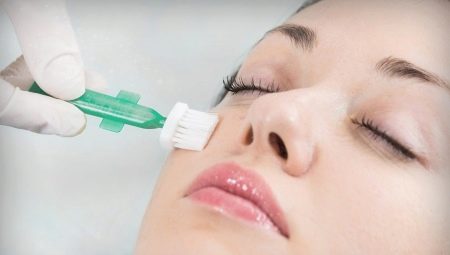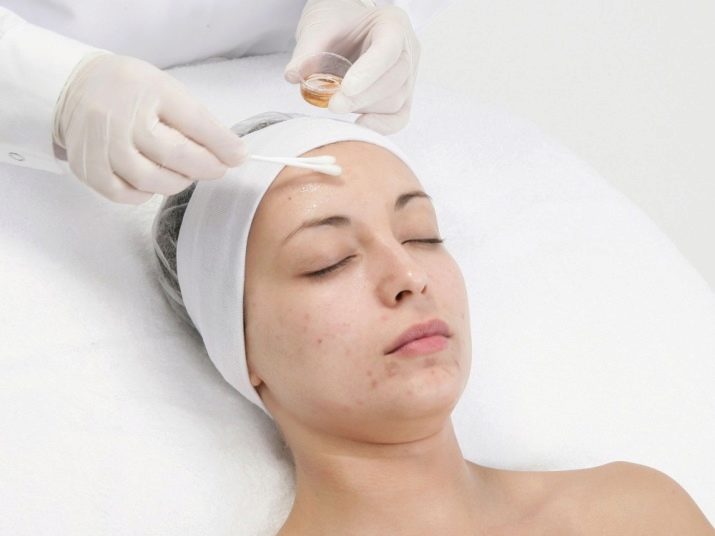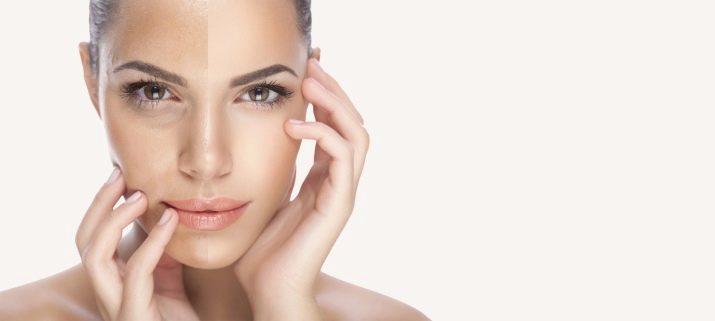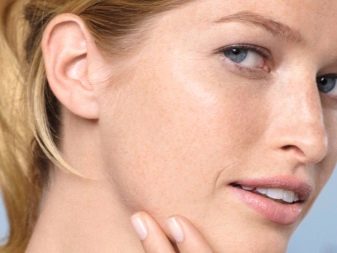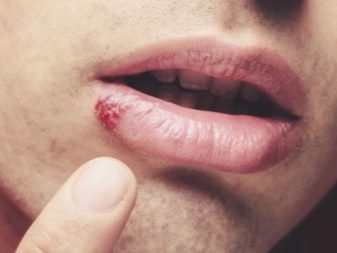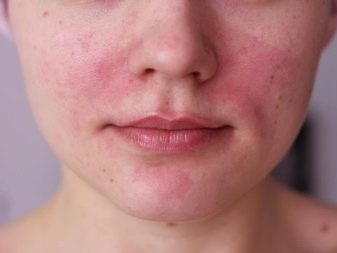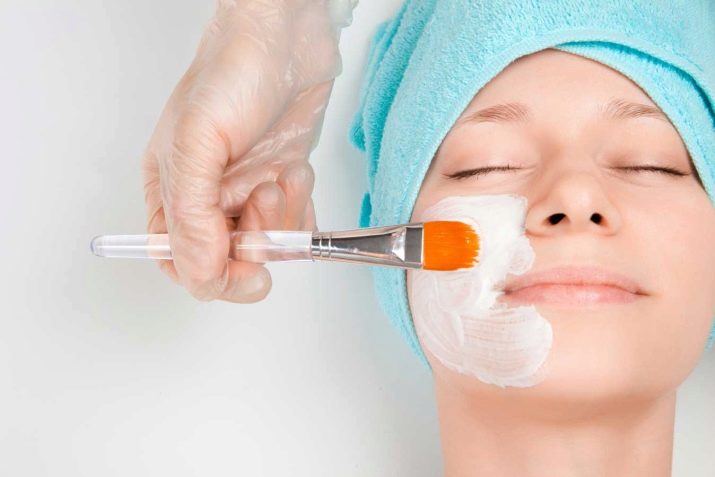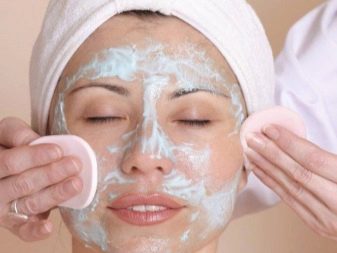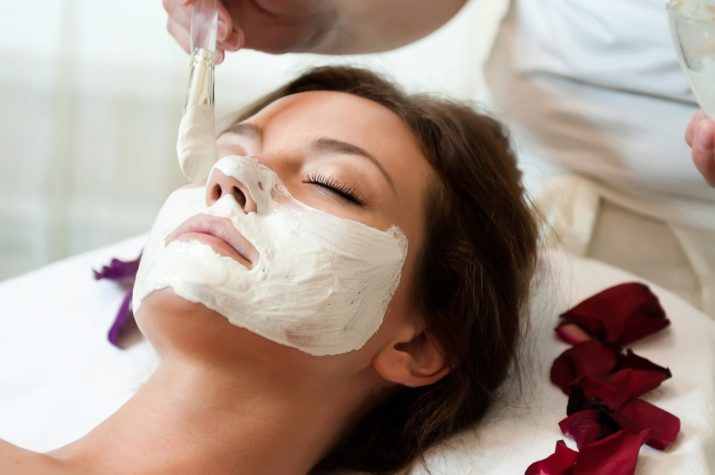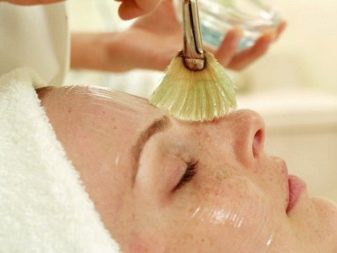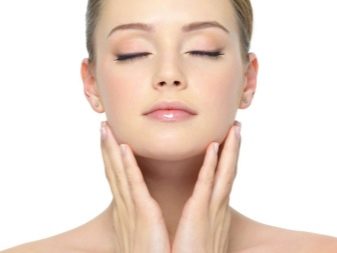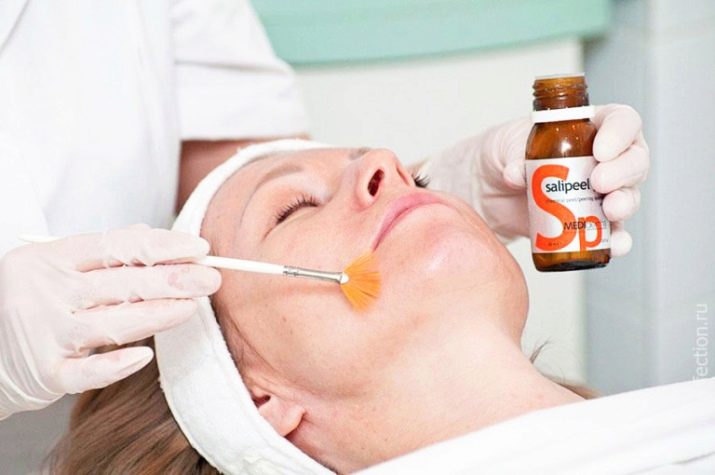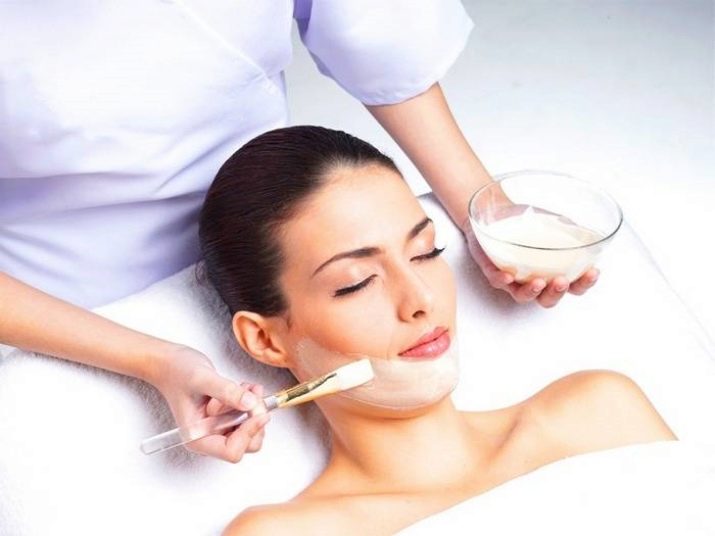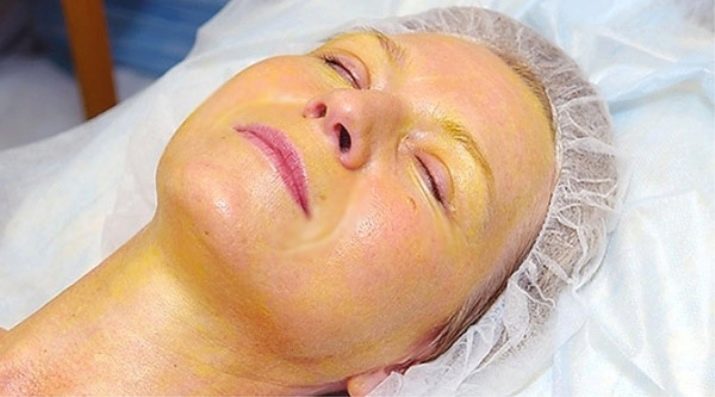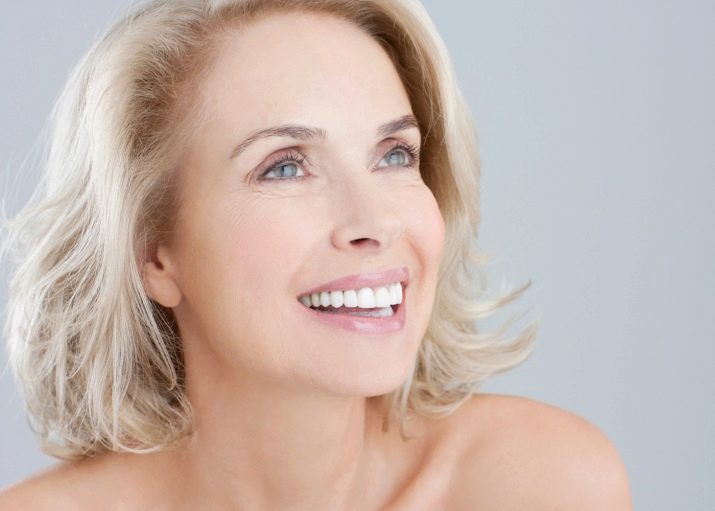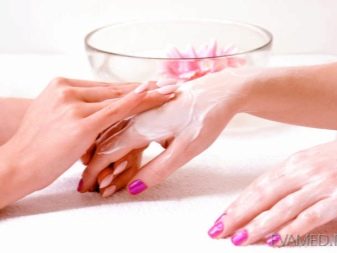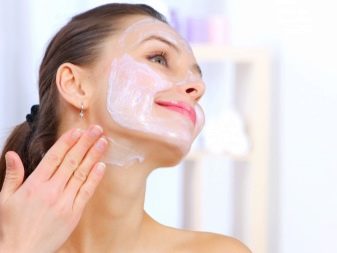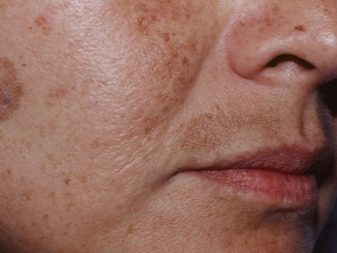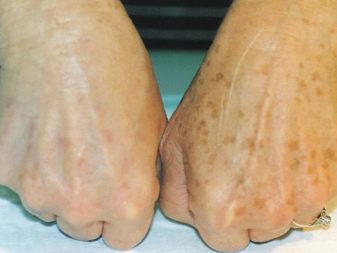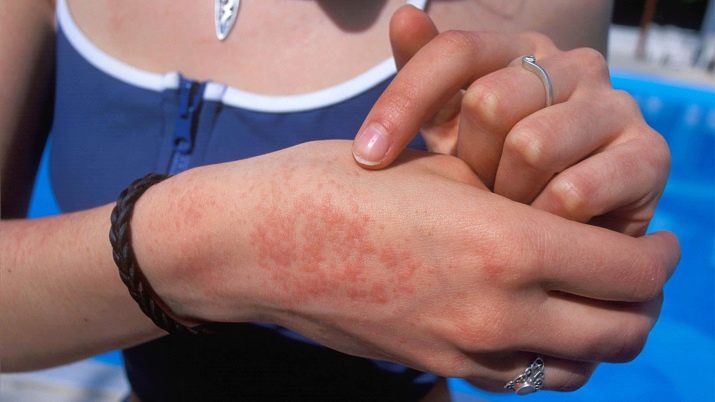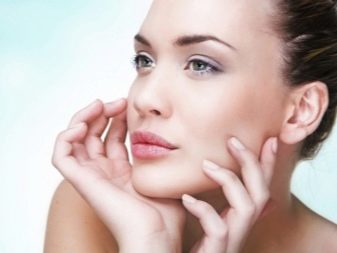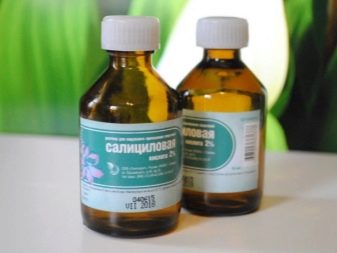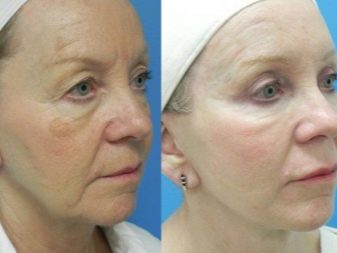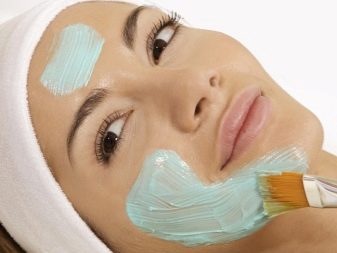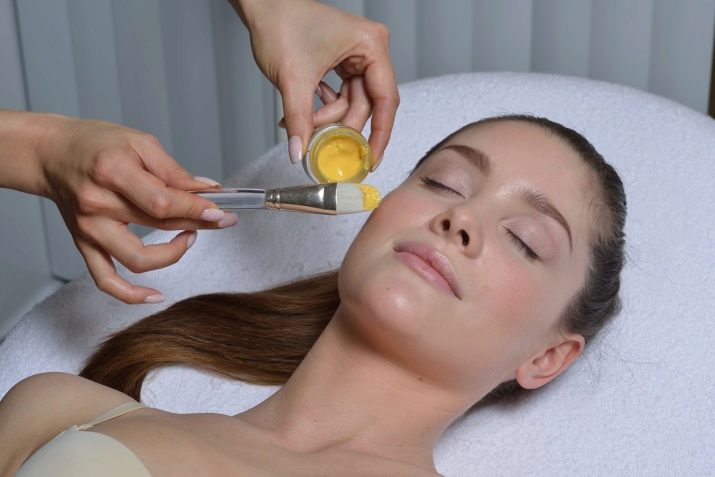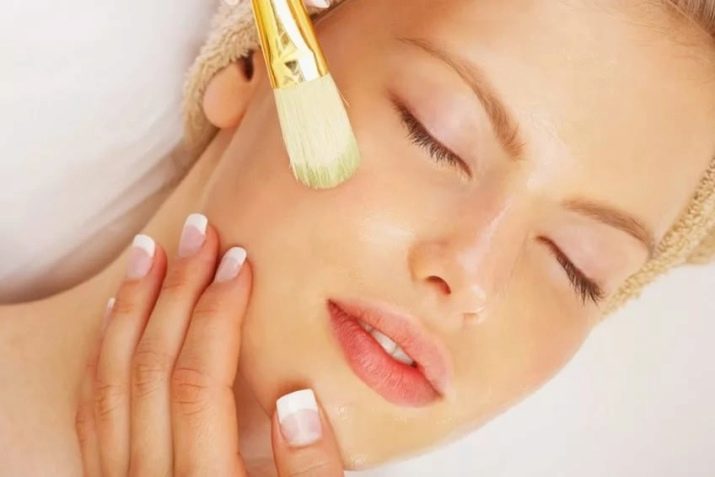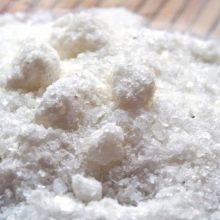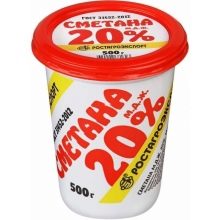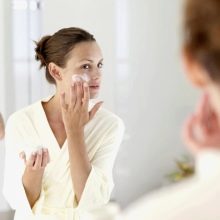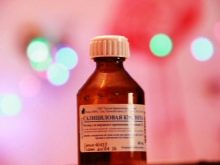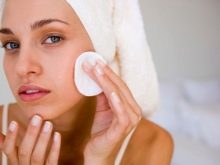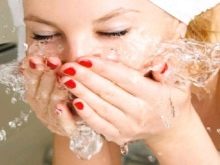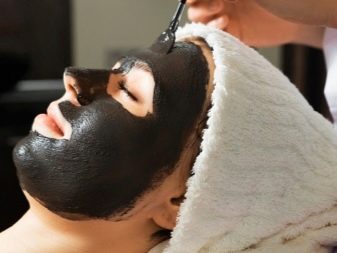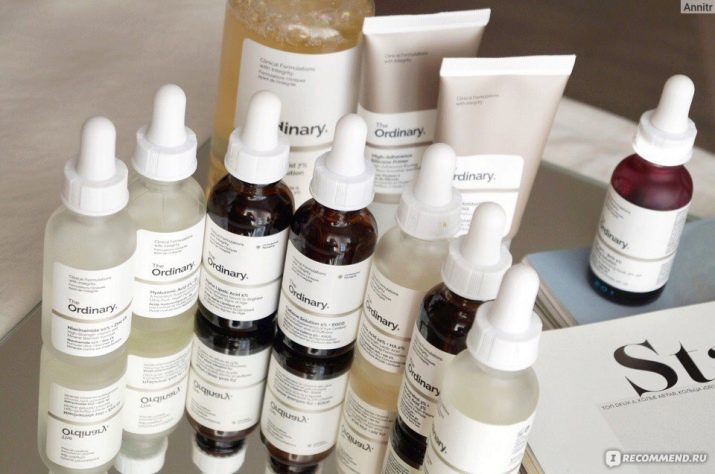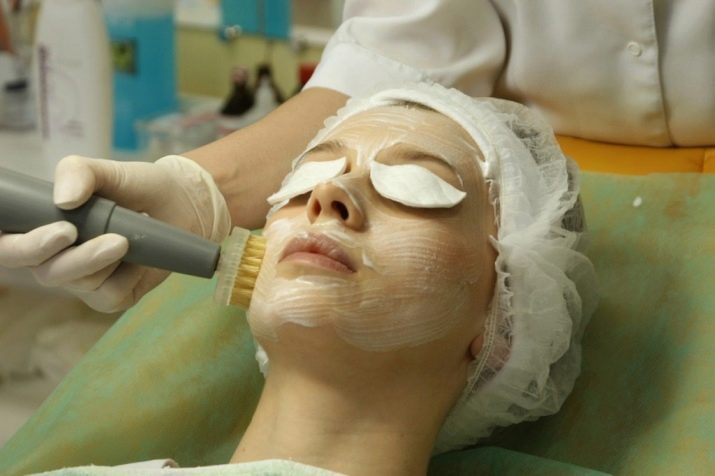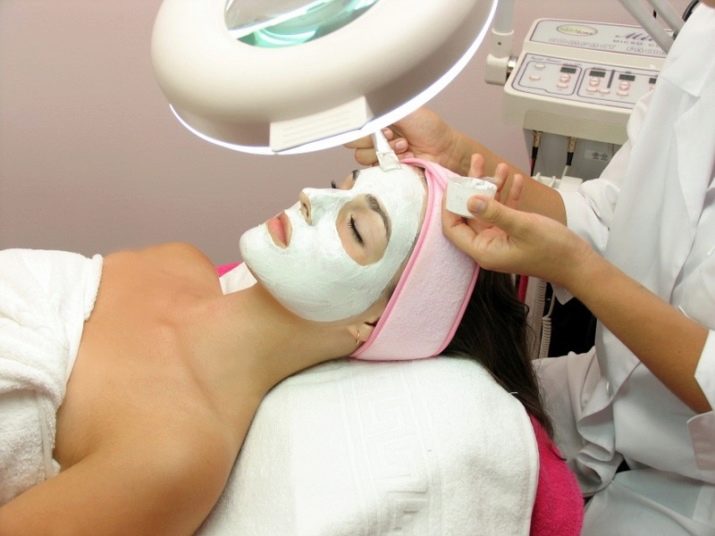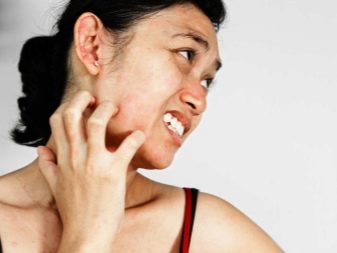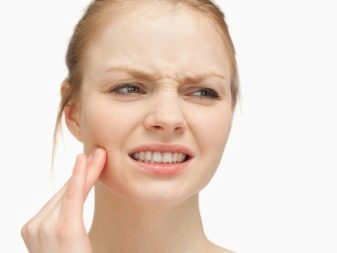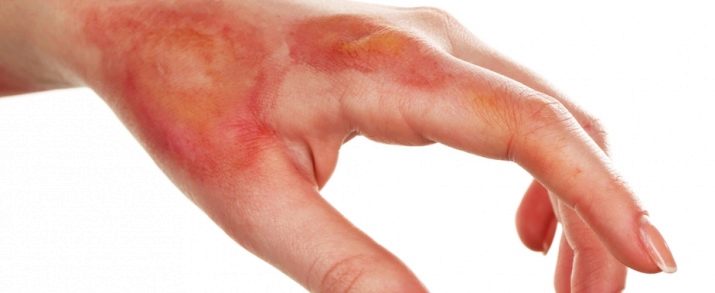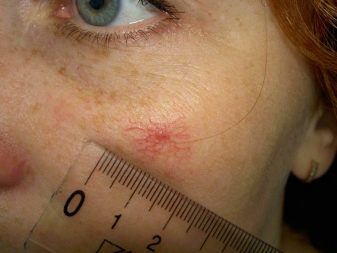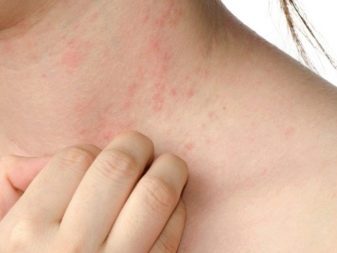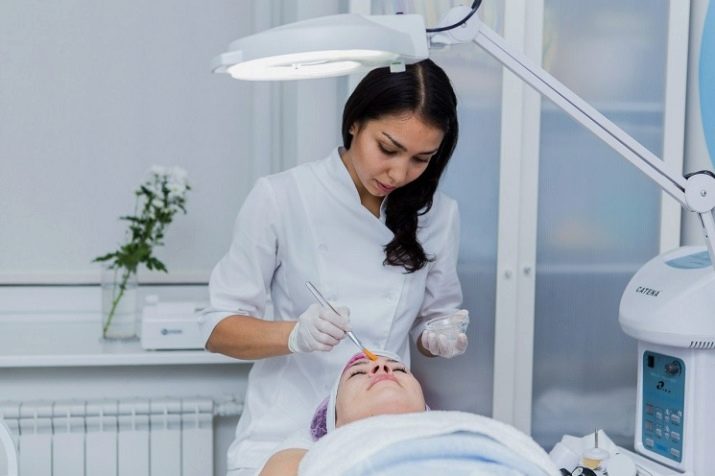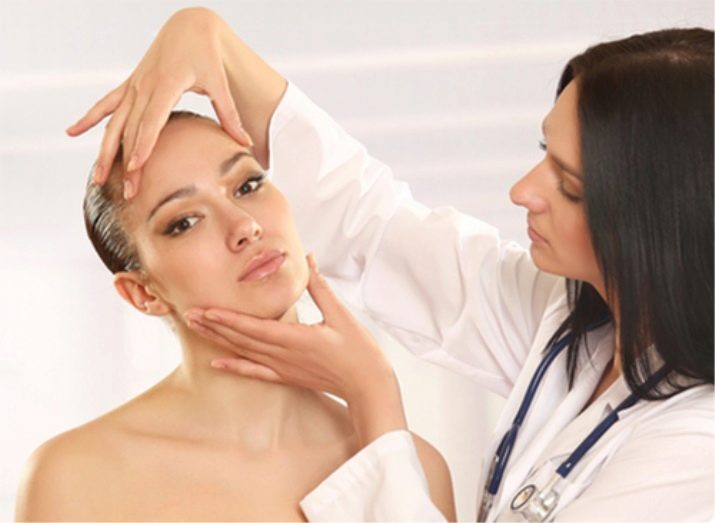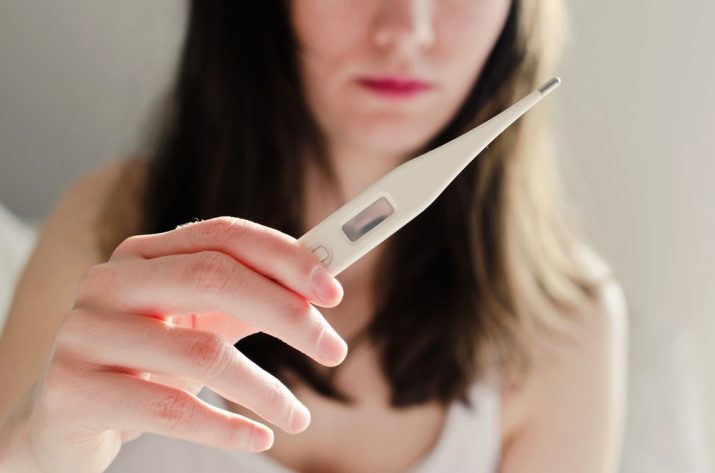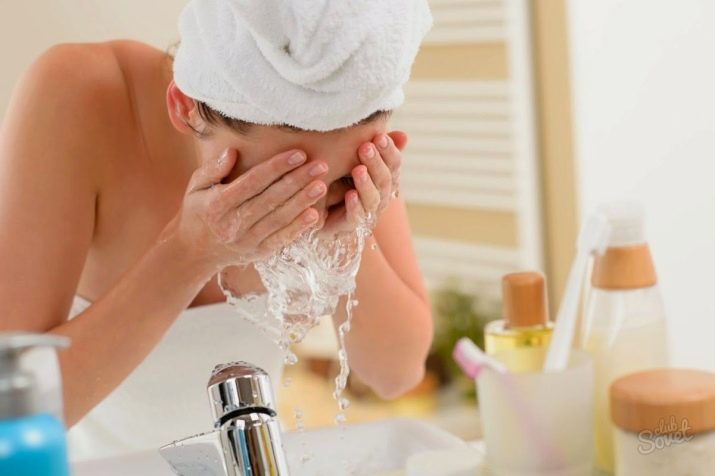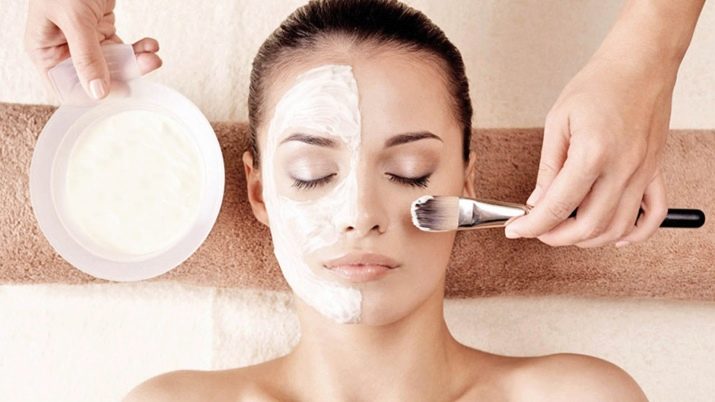The term “peeling” means “scrape”. Thanks to him, keratinized and dead cells are removed from the skin, and the process of restoration and rejuvenation of the skin is going on. You can perform this procedure on any of the parts of the body that need it.
Peeling cleans the skin. Due to the fact that dead cells are removed from the surface, new ones grow faster, the skin becomes healthier and smoother. You can make a peeling by means of a laser, mechanically, chemically.
One of the most common ways to rejuvenate the skin - chemical peeling. It effectively fights surface irregularities, eliminates acne and post-acne traces, pigment spots, corrects wrinkles and does much more, in a word, allows women to look beautiful (and sometimes representatives of the stronger half of humanity) as young as possible.
Features
The essence of any type of chemical peeling is that the skin is affected by various kinds of compositions based on acids in various concentrations. These drugs can not only clear the skin of traces of acne or wrinkles, but also prevent their occurrence in the future.
Depending on what type of peeling is used, the skin is cleaned either by careful removal of the upper layer of the epidermis, or by a chemical burn of all its layers.
Given the seriousness of the procedure, it is advisable to undergo it in a clinic with a good reputation from a qualified cosmetologist.
pros
Fans of this procedure will call a lot of its advantages.
Among them are such as:
- The skin is cleared of the stratum corneum. Due to the acids that make up the peeling, the dead cells of the epidermis soften and are easily removed. As a result, the complexion improves, and its relief becomes much smoother.
- The sebaceous glands begin to work better. Because of this, chemical peeling is indicated for people with oily skin. Acid-based formulations cleanse sebum from the sebaceous glands, normalize its production and tighten pores. Due to this, the skin becomes smoother, and acne disappears.
- Due to the renewal of the upper layer of the skin, a rejuvenating effect is achieved, and wrinkles are smoothed out. During the recovery period, the skin intensively produces collagen and elastin, due to which it becomes more elastic. This is the correction of mimic wrinkles.
- Cure other skin defects. In addition to the above, chemical peels are often used to eliminate scars, scars and post-acne. In addition, it is also effective for getting rid of foci of hyperpigmentation. This is because the upper layers of the epidermis after cleansing with acids during the renewal process produce the melanin pigment.
Minuses
If you accurately follow the protocol of the procedure and do not apply peeling to people who are contraindicated, negative consequences are excluded.
The disadvantages of the procedure include the following:
- Discomfort during the session. Even acid, taken in the smallest concentration, can burn, pinch or tingle the skin.
- Redness is an obligatory skin reaction to peeling. The duration of redness is individual, can last from several hours to two or three weeks.
- Burn and the appearance of a crust on the face. As a rule, this is an individual skin reaction. It requires careful monitoring by a cosmetologist and receiving recommendations for proper skin care at this time.
- Peeling is a natural reaction of the skin to the action of acids. It is impossible to avoid this, so the peeling works. You need to constantly use moisturizers recommended by a beautician.
- Increases skin sensitivity to the action of sunlight. Therefore, one should avoid exposure to the sun without a wide-brimmed hat, and in the period from noon to 16 o'clock in general, try not to be on the street during periods of solar activity.
However, there is such a thing as a post-peeling reaction.
This includes such consequences:
- swelling of the face;
- hyperpigmentation;
- blistering;
- exacerbation of herpes (if the virus is present in the body);
- itching, burning skin;
- chemical burn.
Kinds
Chemical peeling according to the degree of how powerful acids act on the skin, is divided into three groups:
- surface;
- median;
- deep.
Peeling, belonging to the first group, passes over the top layer of skin. It is good for correcting mimic wrinkles and eliminating pigmentation, as well as for combating photo-aging.
Often this type of peeling is used in combination with other, more powerful types in order to prolong and consolidate its effect.
Indications for use
Median type peeling affects the epidermis - a layer that is affected by deep scars or wrinkles. This type of peeling is suitable for use at any age, even when young.
As for deep peeling, this is the most radical effect on the skin, because it is when using this type of acid that all the layers of the epidermis are treated.
Let us dwell on the most popular types of surface peeling.
Mandelic acid peeling, obtained from the bone of the corresponding plant, acts slowly, because it is very soft in its structure. It can even be used in spring and summer, when the sun is active. There are no contraindications to its use.
Glycolic acid peeling acts differently: molecules penetrate the skin smoothly and quickly, providing a lasting effect of the procedure. This type of peeling is suitable for all skin types, except for very dark. It is ineffective for women over 50 years. Glycolic peels are subject to all standard procedure limitations. In the summer it can not be done.
One of the most popular compositions, especially in individuals with oily porous skin, is based on salicylic acid.
This success provides the property to fight inflammation, which, in turn, makes the skin smooth and uniform. Salicylic acid is an excellent remedy for acne, and not only for treatment, but also to prevent its appearance in the future. You can not combine peels based on this acid with zinc oxide.
Peeling can be carried out on the skin of any type, but for them (types) has its own classification:
- The skin of the first type is characterized by the absence of deep and mimic wrinkles. Peeling is recommended to carry out superficial annually on three procedures to prevent the appearance of signs of aging.
- The second type of skin is characterized by the presence of mimic wrinkles in the corners of the eyes at rest and deep - with the manifestation of emotions (laughter, smiles, tears). There are also small pigment spots. For this type of skin, fruit acids and a course of seven treatments are suitable. Beauticians recommend repeating it once every six months.
- People with skin of the third type have wrinkles around the eyes, mouth, and also on the forehead at rest, in addition, impaired pigmentation of the skin. Representatives of the third type of skin are recommended to combine surface peeling with the use of fruit acids with a median peeling using trichloroacetic acid. It is necessary to do the procedures regularly, the frequency is set by the beautician, depending on the condition of the skin.
- The fourth type is characterized by the presence of deep and multiple wrinkles, as well as an uneven surface and flaccid skin turgor.Pigmentation is impaired. As a rule, peeling using trichloacetic acid is used for correction (at least three procedures), then peels using glycolic acid are assigned. This should be done only after consulting a dermatologist and his control after each procedure.
It is most difficult to correct (for obvious reasons) 4 skin type, however, with it you can achieve a visible result. Of course, in 60 years not a single peeling will make it possible to look either 20 or 30, but it is quite possible to maintain the appearance and tone of the skin in a decent and tidy condition.
Any medical and cosmetological procedure has indications for use, and chemical peeling is not an exception.
Age indications are as follows:
- people under 25 with the help of chemical peeling get rid of acne, acne, skin defects, and also heal molluscum contagiosum;
- clients from 25 to 30 years old are treating problem skin, post-acne, age spots, actinic dermatitis, as well as prophylaxis of early aging of the skin;
- persons older than 30 years get rid of age spots, keratosis, correct wrinkles, folds, remove warts and papillomas, as well as prepare the skin for plastic surgery on it.
Acid-based peeling sessions show:
- to persons wishing to rejuvenate the skin, get rid of photo-aging and correct age-related changes;
- people with foci of hyperpigmentation on the face of different nature of origin: freckles, chloasma, melasma or lentigo;
- to persons suffering from acne and acne, as well as from rosacea (here it is necessary to make a reservation that peeling is possible only if the acne is pink, that is, not inflamed);
- improvement of skin relief, narrowing of pores, leveling tone.
Cosmetologists recommend combining peels based on acids with botox, mesotherapy, biorevitalization and contour plastics.
In addition, peeling can be a preparation for the procedures of laser rejuvenation and photo rejuvenation.
It should not be thought that only a face can be subjected to chemical peeling, although most often it is it that is treated with acids.
The areas of the body on which this procedure can be effectively carried out are:
- hands in the area of the hands;
- neck and decollete;
- areas of the body that have scars, papillomas, age spots, stretch marks or acne.
For the skin of the body, the most suitable is the median type of peeling, since the superficial one often does not solve the problems that the client has. Well, to get rid of stretch marks median peeling is the best solution and obvious benefit.
Restrictions
There are two absolute obstacles for carrying out this cosmetic procedure: it is a high sensitivity of the skin and the presence of an allergic reaction to the components of the peeling.
There is a group of contraindications that can be called temporary. For example, chemical peels should not be applied to the skin with a freshly acquired tan.
Also, it is not necessary to combine this procedure with the intake of substances that increase the skin's sensitivity to the effects of sunlight - astastantin, estrogen, antibiotics based on tetracycline, retinoids, and neuroleptic drugs, since there is an increased risk that pigmented spots will appear on freshly-peeled skin.
Chemical peels are contraindicated for women during pregnancy and lactating mothers. Also, the procedure is not carried out for persons suffering from infectious and viral skin diseases, diabetes mellitus, systemic diseases in the acute stage, hypertension, coronary heart disease, as well as oncology of all kinds.
If you have done a procedure that harms and thinns the epidermis, for example, microdermabrasion, depilation or epilation, whitening, or used a scrub, you need to wait at least a week before undergoing the peeling procedure.
Also, you can not peel:
- if there are tumors of any type;
- if there are papillomas on the skin;
- in case the skin is damaged or irritated;
- skin is affected by herpes in active form;
- if the skin has a high reactivity and sensitivity;
- if there is an allergic reaction to the components of the peeling;
- if acne has worsened;
- if radiotherapy was recently performed or Roaccutane was used.
It is best to carry out the procedure in the autumn when solar activity is declining. During the period of strong exposure to direct ultraviolet rays, the skin will recover for a long time after being destroyed by acids, which is why late spring and summer are not the best time for these procedures.
How to use?
The most widely used components of chemical peels are alpha hydroxy acid (AHA), beta hydroxy acid (BHA), retinoic acid and trichloroacetic acid.
Hydroxy acids are divided into alpha and beta hydroxy acids. The first is used in surface peeling. This type of acid includes glycolic and fruit acids - citric, tartaric, malic, and also lactic.
Depending on the concentration in which glycolic acid is taken, peeling based on it can be both superficial and medium. Alpha hydroxy acids are used for chemical peels for dry skin users.
As for beta-hydroxy acid based formulations, they are more suitable for people with oily and / or sensitive skin suffering from acne or acne. Betahydroxyacids include the well-known salicylic acid. Beta hydroxy acids penetrate the skin pores deeper than alpha analogs. Therefore, they can be used in a less concentrated form. The properties of salicylic acid, in addition to the exfoliating properties, are antiseptic, it also dries inflammation and is fat soluble.
Trichloroacetic acid most often used in a concentration of from 25 to 30% for the middle peeling. If you take this acid in a concentration of 40%, it can be applied in a deep peeling. Often, preparations based on it are called blue peeling due to color.
Another “color” peeling is yellow. It consists of a mixture of retinaldehyde, vitamin C and acids. First, the face is “prepared” with the help of a preparation based on glycolic acid in a concentration of 20 percent. Next, apply peeling with retinoids. Kojic and phytic acids remove pigment spots, azelaic acid, in turn, regulates the degree of oily skin and leads to the fight against free radicals. Collagen production is accelerated with vitamin C, and retinoic acid controls sebum secretion.
Cooking recipes
Despite the complex composition, it is possible to make chemical peels at home. It is important to observe the sequence of actions and the formulation of the drug.
Three compositions are suitable for carrying out chemical peeling: on the basis of fruit acids, lactic and almond.
Recipes compositions for chemical peeling at home:
- With the use of aspirin. It will take 3 tablets of the drug, they must be thoroughly crushed and mixed with 0.5 tsp of pure water. After mixing and the formation of gruel add a teaspoon of natural (not whipped) honey. The mixture should be infused for 10 minutes, after which it is applied in a circular motion on a previously cleansed face, avoiding the area around the eyes. You need to keep the composition for 5 minutes, after which a light massage lasting about one and a half minutes. Wash the mixture thoroughly with plenty of warm water.
- Composition with sodium chloride, and more simply - with table salt. One teaspoon of salt should be mixed with a tablespoon of 20% sour cream. Face should be clean and steamed. The mixture is applied to the skin with a cotton pad or a ball, massaged for two minutes and washed off. Last rinse should be cool water. After it, you definitely need to apply fatty nourishing cream.
- Another simple procedure is one ampoule of calcium chloride "Drive" in the face (put layers, waiting for the drying of the previous one). Enough 5-6 layers. After that, the finger pads are washed with baby soap and massaged into the skin until it begins to roll into small lumps. As a rule, the formation of pellets is accompanied by a characteristic squeak sound. The remains of calcium chloride are removed with a damp cloth or disc, after which a nourishing cream or mask is applied.
- Salicylic acid peeling. To do this, you need an acid in a concentration of 15-20%. It is applied to a clean face with a cotton pad or swab, it should be kept for about 20 minutes (not longer). After the specified time, the acid is washed off with plenty of cool water.
- To prepare activated carbon based composition, coal, water and gelatin in crystals are required. In three tablespoons of warm water diluted crystallized gelatin and mixed with half a tablet of coal, pre-crushed. The specified composition is applied with a brush on a clean face. When the mixture is dry, the film is removed from the face.
- Retinol-based peeling (“yellow”). This peeling should not be confused with retinoic, which is based on the acid with the appropriate name. As for retinol, it consists mainly of vitamin A, it does not contain acids, so it is much softer. As for a more aggressive peeling with retinoic acid, it is not recommended to be done at home, as it is necessary to observe a cosmetologist.
Best at home to do retinol peeling. Its components are inexpensive, the result is visible immediately, there are almost no side effects and contraindications.
You can use and finished products, a huge amount of which is now commercially available. These are the Ordinary acid-based products popular with beauty bloggers, cosmeceuticals (both economy class and luxury), and Asian products. The products contain both alpha hydroxy acids (AHA) and beta hydroxy acids (BHA).
Each tool has instructions on how and when to use it. Having decided to make a peeling independently at home, it is necessary to strictly follow the specified sequence of actions.
If the skin is hypersensitive and prone to irritation and rash, it is better to opt for polyhydroxy acids (PHA): lactobionic and gluconolactone. They are similar in composition to the ANA, but have a softer effect on the skin.
Care
Anesthesia for the peeling session is needed infrequently, but the composition can cause a slight burning sensation. The deeper the peeling is done, the stronger the sensation. Therefore, the median peeling is carried out after the person has taken an analgesic and tranquilizer, and if the pain threshold is low, local anesthesia can be used.
As for deep peeling, it is carried out exclusively under general anesthesia. The procedure involves not only a professional dermatologist-cosmetologist, but also a plastic surgeon, as well as an anesthesiologist, who monitors the patient's condition.
However, in some cases, general anesthesia is replaced by a local injection in combination with a tranquilizer.
At the beginning of the procedure, the skin is treated with an alcohol-based composition or with an acetone content. Thus, it is degreased. Next, provide protection to the eyes to avoid the ingress of acids. After that the peeling mixture is applied directly. After the allotted time, the solution is carefully removed, and protective and moisturizing preparations are applied to the skin.
Unfortunately, the unpleasant effects of peeling are possible. These include:
- Soreness of the skin. Most often it is felt after the mid or deep peeling and lasts 3-5 hours.
- Redness of the skin. It depends on the depth of the peeling. Superficial peeling causes insignificant redness for several days, the middle one and especially deep - intense red complexion lasting up to 30 days.
- Itchy skin, face much flakes. Usually, surface peeling does not give such a “side effect”, but the individual features of the skin can cause peeling after it.
- Peeling allergies are rare, especially if an allergy test was done before the session at the crook of the elbow. But in order to avoid undesirable consequences, if a person is allergic to something, it is better to take antihistamines before and after the procedure.
In addition to the usual effects, chemical peels can also cause a number of complications:
- A chemical burn is theoretically possible with a mid or deep peel. It comes from the wrong choice of composition, incorrectly calculated duration of the procedure. To minimize the risk of burns, it is better to do a middle and deep peeling with a beautician with a medical education.
- Folliculitis or acne occurs if after the procedure moisturizing and softening creams that are not suitable for the skin type are used. To get rid of acne, you need to take a course of antibiotics.
- Infection - bacterial or fungus. This complication occurs very rarely, but leads to scarring. Superficial peeling does not cause such complications. It is necessary to find out before the procedure, what equipment and in what conditions it will be produced.
- Strengthening of herpes most often occurs if a person who has a human papilloma virus in his presence does not mention this to the doctor and, as a result, does not take prescribed antiviral drugs or immunostimulants before, after and during the procedure.
- The appearance of age spots is usually a temporary phenomenon, but in some cases the spots persist up to 2 years. They are treated with hydroquinone or other means of similar action.
- Loss of pigmentation in individuals with dark skin can persist for the duration of a lifetime.
- Asterisks of vessels. In another way, this phenomenon is called telangiectasia. Most often become noticeable at the end of the peeling. They are removed by laser therapy.
- The demarcation line appears after the middle or deep peeling and marks the border between the area where the peeling was performed and where it was not.
- Scars - an extremely rare complication. Their forerunners can be a constant itch in combination with red skin.
To minimize the possibility of complications from the procedure, it should be done only with certified specialists with medical education.
Median and deep peels are carried out only by dermatologists. When choosing a salon or clinic, one should pay attention not only to the reputation of the establishment, but also to the qualifications of the master to whom you are planning to apply.
Recommendations
There should be at least 7 days between treatments. It is important to remember that rehabilitation after a single peeling session may take several hours or several weeks. It is necessary to provide for this and, if possible, limit access to fresh air.
In more detail about how long the skin restoration will take, can only be told by a dermatologist who has been observing you for a certain time and is familiar with the peeling method.
After the procedure, the person gets a red tint, this should not be frightened. In order to avoid irritation and rashes, you should clearly follow the instructions of the beautician both before and after the peeling: use a protective cream and moisturize the skin on an ongoing basis. If you decide to replace the cream with a similar one, it is better to consult with the specialist who performed the procedure: whether it is possible to change the means, what to consider as analogs, whether there will be an effect of the replacement - all these questions should be asked to the doctor before doing something.
Before the procedure, you need to test your skin for allergies: apply a small amount of the drug of the concentration that you plan to work on the back of the hand or the crook of the elbow, hold for about ten minutes, then rinse thoroughly and examine the skin for reactions.
It is necessary to remember that any kind of peeling, even superficial, is stress for the body. Therefore, it should not be done when the body is already weakened: during periods of menstruation, increased mental stress, influenza, acute respiratory infections or SARS, any other cold.
Before visiting the beauty salon, you need to bring your physical condition back to normal. You should have a normal body temperature, working pressure, no signs of colds and skin diseases.
If the skin is unhealthy, peeling can not be done! Only acne is an indication for the use of preparations based on acids, any other rashes or facial wounds - this is a ban on the peeling procedure.
It is important to remember that all chronic diseases, the presence of which you did not tell the cosmetologist, and the consequences associated with this are not his fault.
Diseases of internal organs, skin, infections and viruses must be reported to the doctor.
The dermatologist makes a decision about the possibility or impossibility of carrying out the peeling procedure on the basis of information received from the client, and the more complete it is, the better, first of all, for the client himself.
If the peeling is recommended once a year, it is better to make it in October or November, if it is necessary to carry out the procedure twice a year, the optimal time for re-peeling will be March.
The basic rule of any peeling: the composition should not burn skin and should not cause pain. If the skin has a feeling of strong discomfort, the skin “bakes”, it “burns”, you should wash your face with cool water in large quantities as soon as possible and apply creams with moisturizing and soothing effects immediately.
In no case can one retain the composition on the face for longer than the prescribed time. It can cause a negative skin reaction - from simple redness to a chemical burn.
At the end of the peeling procedure, you need to make sure that not a drop of makeup is left on the face. Even a small amount of acid mixture can cause irritation and cause a lot of inconvenience.
As a rule, women are more willing to try superficial peeling, respectively, and more reviews about it. Since this is the least traumatic type of peeling, and the skin after it is restored faster, the women who have tried this procedure note an improvement in the relief of the face, skin quality, narrowing of pores and getting rid of small wrinkles.
In addition, a tangible advantage of surface peeling is the fact that products with such properties are sold in finished form, and without having the desire to visit a cosmetologist, you can buy a miracle remedy and arrange yourself a beauty salon at home.
You can learn more about chemical peeling in this video.
